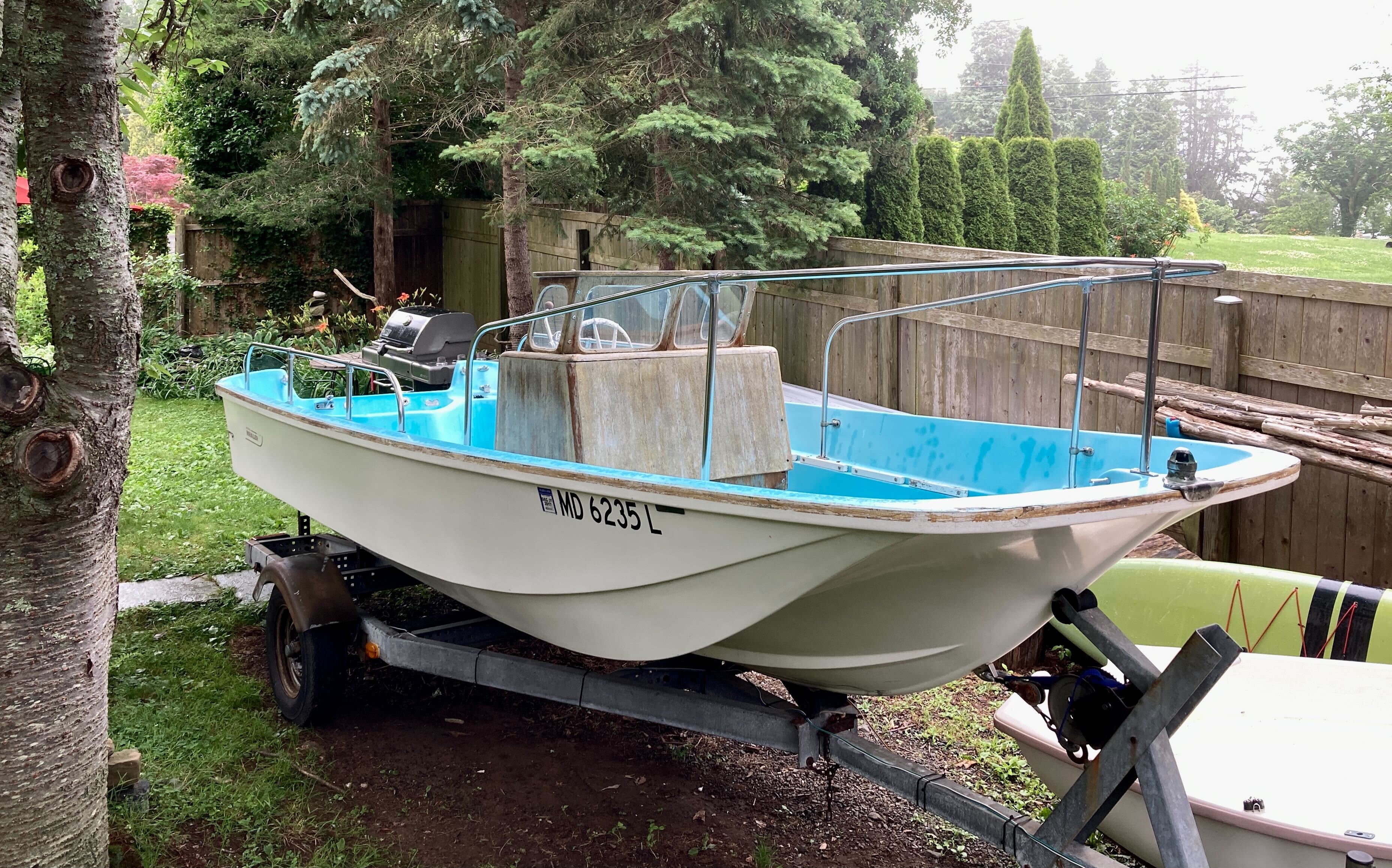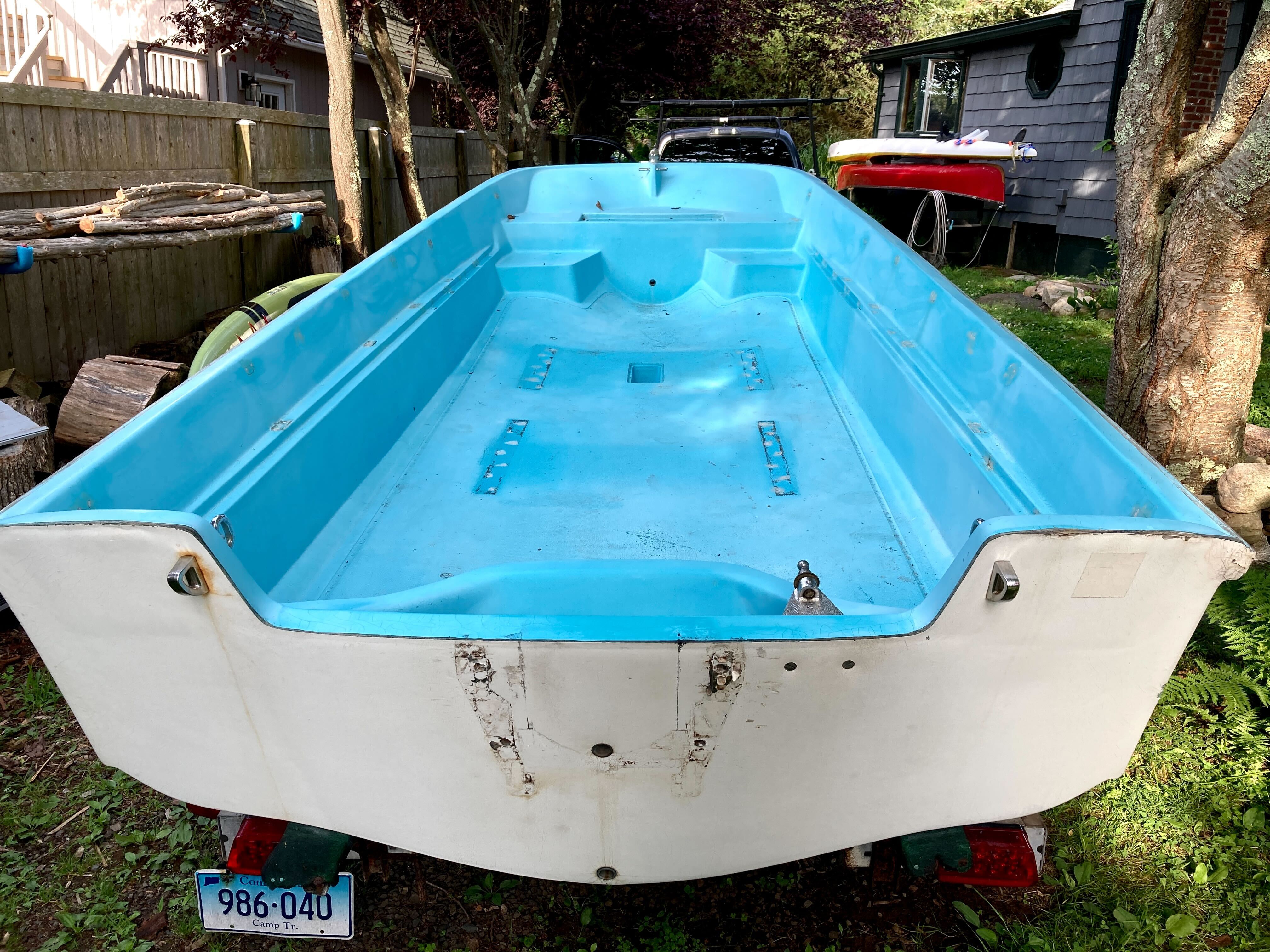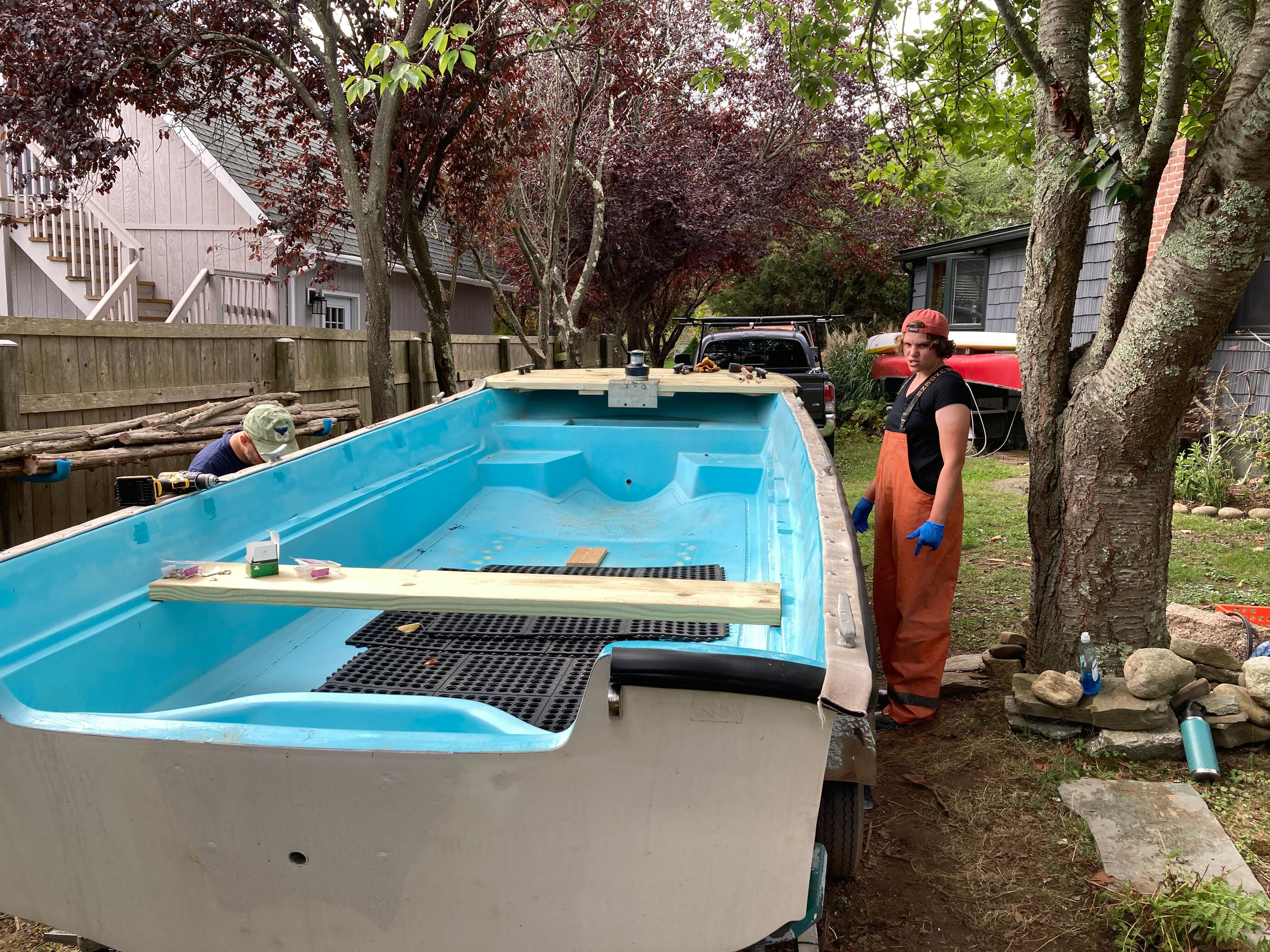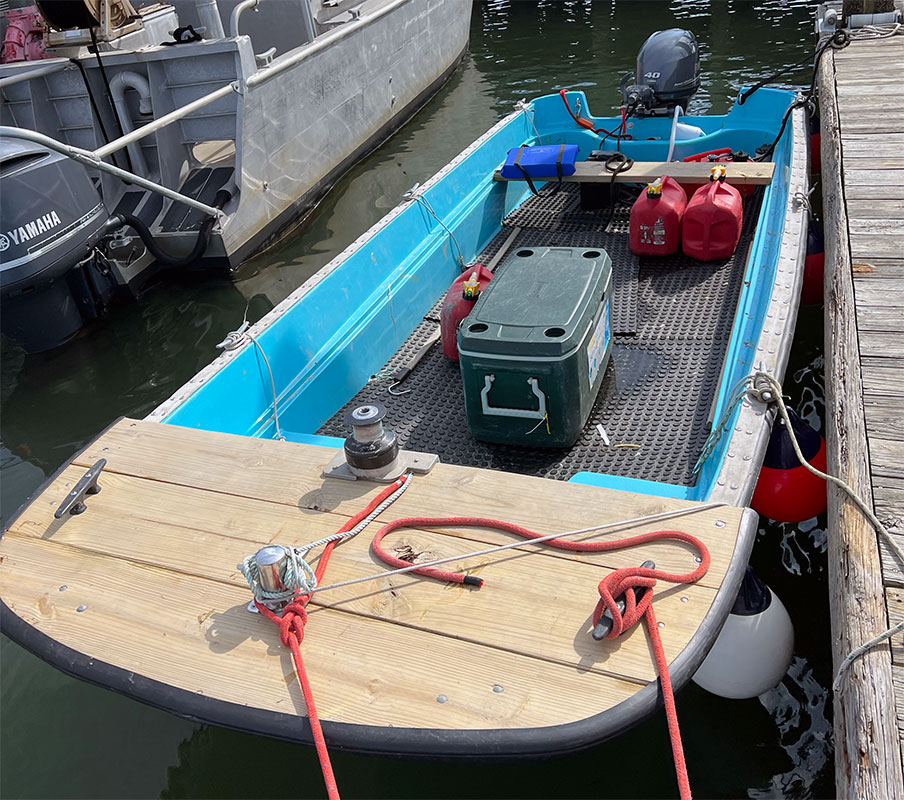Watch how a davit, paired with a block and tackle system, can be used to lift heavy items.
Back to: Map Your Resources
It’s unlikely that the boats you find available will be perfectly configured for kelp farming. You’ll probably have to make some adaptations, regardless of which type of boat you choose to buy, which may mean stripping the boat down to its hull and rebuilding from the bottom up. Here are before and after photos of boats that were reconfigured for ocean farming on the GreenWave farm.
Willa, a 16.5-foot Boston Whaler, was rebuilt for tending kelp lines on the GreenWave farm. In the renovation, the farm crew stripped the boat down to its hull, removed the center console to maximize deck space, put in reinforced gunnels, and added an outboard with a tiller arm, a line hauler on the bow, and benches for seating.
As you consider the design for your boat, think of creating modular spaces that you can use for different activities depending on your needs during the different times in the growing season.
It may take you a couple of seasons to figure out what the best boat design is for your farm. As you’re considering what changes to make, pay attention to how other workboats are configured and how different industries have solved similar problems.
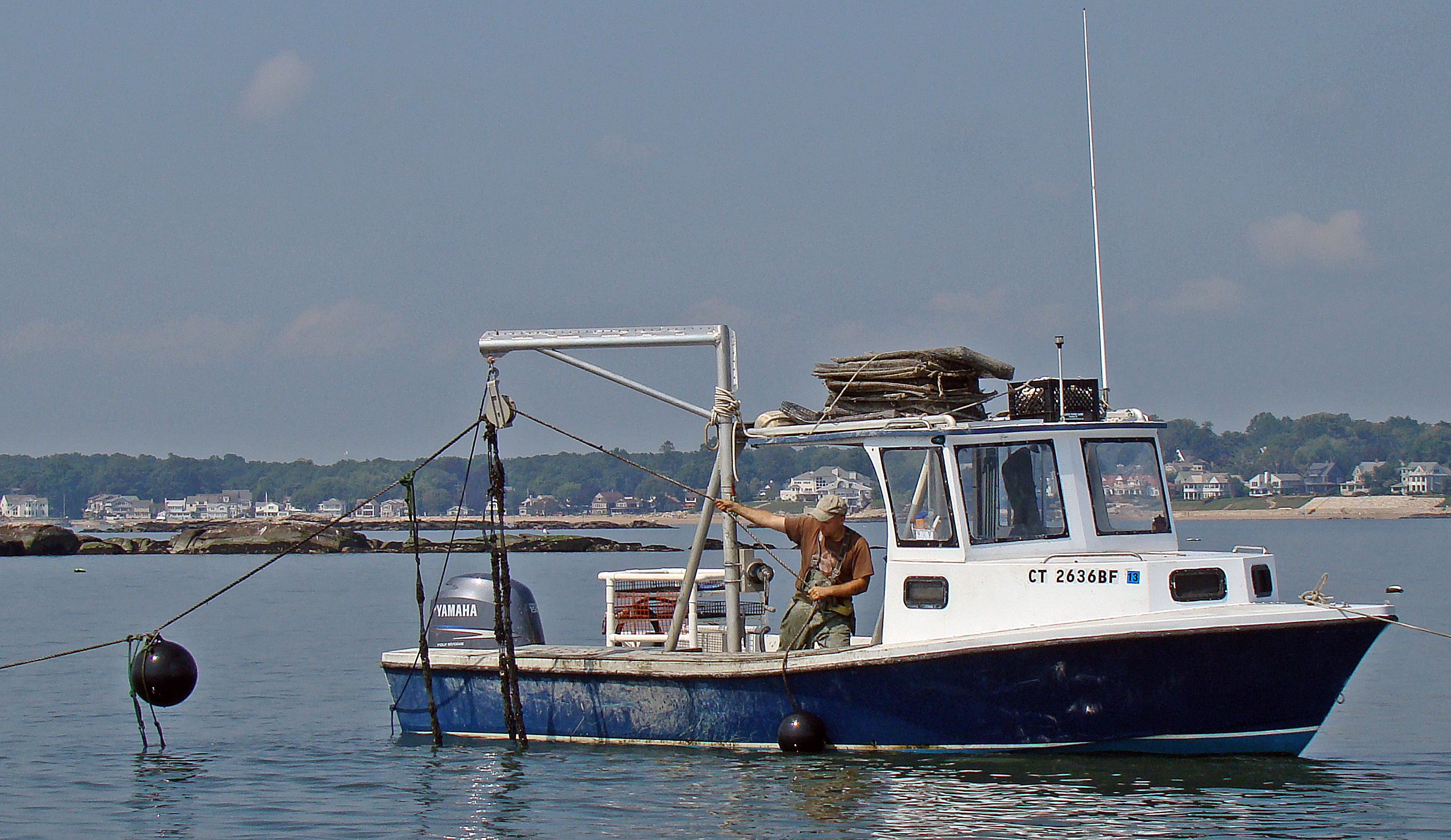
When it comes to deploying your anchors and harvesting your kelp, it’s useful to have an overhead pick point.
One common system for lifting and deploying heavy gear over the side of the boat is a rotating davit. The davit helps give you leverage and allows you to work the gear standing up on the boat, which can protect your back. If you just have a small skiff, your boat might not be large enough or the right shape to accommodate a davit, in which case you may need to borrow or lease a larger boat for these farm activities.
Many farmers also incorporate some sort of winch, line hauler, or block and tackle system that can be used with the davit to give mechanical advantage and extra hauling power.
